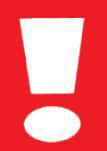SAS Urban Survival Handbook (23 page)
Read SAS Urban Survival Handbook Online
Authors: John Wiseman
Tags: #Health & Fitness, #Reference, #Survival, #Fiction, #Safety, #Self-Help, #Personal & Practical Guides, #General, #Survival Skills

 The main fire risk in bedrooms is caused by people smoking in bed. Another common cause of fire is the electric blanket. Some mattresses are now made of foam and risks are as serious as with foam-filled furniture in the living room. Toxic fumes given off during burning are a major cause of loss of life (see FIRE!). Nightclothes should be made of flame-retardant fabric.
The main fire risk in bedrooms is caused by people smoking in bed. Another common cause of fire is the electric blanket. Some mattresses are now made of foam and risks are as serious as with foam-filled furniture in the living room. Toxic fumes given off during burning are a major cause of loss of life (see FIRE!). Nightclothes should be made of flame-retardant fabric.
The bedroom seems to be a room where people stumble around a lot in the dark—usually getting up in the night to go to the toilet. DON’T leave shoes or clothing where they can be tripped over. DON’T leave drawers and doors open to be walked into. DON’T leave trailing flexes around.

WARNING
Don’t be tempted to drape a cloth or place a paper bag over a light to dim it. Use a low-wattage bulb, a dimmer switch or a safetyapproved nightlight.
Electric blankets
Some new blankets have good thermostatic controls, or devices to prevent overheating. The more safety features, the better. Older electric blankets may represent a serious hazard.
- ◑ ALWAYS switch off before going to bed—unless a special type made to operate on extra-low voltage (ELV).
- ◑ Have your electric blanket checked by the manufacturer if there is any sign of fraying, scorching, worn flex, loose connections or tie tapes damaged or missing—every year, even if nothing appears to be wrong. Do so in the summer when you don’t need to use the blanket.
- ◑ NEVER use an electric overblanket as an underblanket or vice-versa.
- ◑ ENSURE underblankets are flat and securely tied to mattress. Check regularly. NEVER secure with safety pins.
- ◑ Do NOT use a hot-water bottle with an electric blanket.
- ◑ NEVER use an electric blanket that is wet for any reason. Even if an electric blanket is only slightly wet, do not switch it on in an attempt to dry it out.
- ◑ Roll rather than fold an electric blanket when in storage. Keep it on top of a pile so that it’s not squashed by other bedding or store as an extra blanket on a spare bed.
THE NURSERY
- ■
Ensure cot mattresses fit well and leave no room at head or foot. - ■
Cot bars should be not more than 6cm (2.5in) apart so that a child cannot trap its head. - ■
Baby bumpers (to keep child from banging against rails) are not really necessary. If you use them, ensure ties are as short as possible—use a double knot and trim off the ends. - ■
Babies under 12 months old should NOT have pillows. - ■
Lie babies on their side or front. On their backs, if they are sick, it is possible that they may choke. - ■
Do not leave babies to sleep in quilted bag ‘baby nests’ all night. - ■
Use anti-burglar window catches to prevent children opening windows and falling out. Alternatively fit bars or railings, at least until the child is old enough to understand the dangers. - ■
Audio baby alarms are essential to detect any problems that may occur—and to avoid you constantly looking in to check the infant is all right. Video (CCTV) versions are also available. It’s worth using these until the child is at least four, especially during periods of illness.

WARNING
Some pillows and duvets/eiderdowns are washable or may be dry cleaned. If dry cleaning is preferred, take the item to a specialist—not a do-it-yourself dry cleaners. After dry cleaning, the bedding MUST be properly aired to prevent the residual poisonous fumes from the cleaning fluid making you very ill—possibly causing lung and eye irritation, possibly death in infants.
BATHROOM
 Electricity and water are an extremely dangerous combination.
Electricity and water are an extremely dangerous combination.
In the bathroom there is a lot of wellearthed metal. When you become wet, especially in the bath or shower, you become an excellent conductor. There should be:
- ◑ NO ordinary sockets in the bathroom.
- ◑ NO ordinary switches—unless the pull-cord type.
- ◑ NO way to touch any electrical appliances from the bath.
- ◑ NO portable electrical equipment in bathrooms.
The light should be operated, if not by a pull-cord switch, then by a switch OUTSIDE the bathroom altogether. NEVER switch it on or off with wet hands. The same applies to over-mirror lights and heaters. Light fittings should be fully enclosed to avoid the risk of dense steam or water splashes reaching them.
Electric showers should only be fitted by an expert, and protected by an RCD/RCB/ELCB (see
Electricity
).
NEVER take any mains-operated appliance, not even a radio or hairdryer, into the bathroom on an extension lead. NEVER NEVER NEVER allow anything like this near the bath when you are in it!
If you have to use power tools in the bathroom, make sure you use an RCD/RCB/ELCB.
The bath
Falls in the bath account for one third of bathroom accidents. DON’T stand in the bath, especially not when drying yourself. People tend to stand on one foot, resting the other on the side of the bath. One slip is all it takes!
If you must stand in the bath, because the shower is there perhaps, use a non-slip rubber bath mat. Fit grab handles using solid fixings—a grab handle attached to a hollow plasterboard wall may come away in your hand. The same goes for anything else you may clutch at when falling, although slipping in the bath is like slipping on ice. You don’t realize what is happening until you land! If you need to fix to a hollow wall, screw into the wooden batons behind the plasterboard.
Test water temperature before getting into the bath. It shouldn’t emerge from the taps at nearly boiling point—although many people seem to adjust hot-water cylinder thermostats until this happens. It should not be necessary to set the thermostat much above 64°C (147°F).
Avoid highly polished floor surfaces, and mop up any spills. Don’t splash water around. Check that the shower and splashed bathwater don’t regularly run down walls or trickle down onto the floor. Small leaks can do more damage than big ones. If you have let the bath overflow, it could be serious enough to bring down a ceiling in the room below. Small leaks on a regular basis could be just as serious.
BATHROOM ROT
The conditions around the shower, bath and toilet, bidet and washbasin are ideal for producing rot in timbers. This room could be the site for the beginning of a devastating problem. Avoid constant leaks, puddles and splashes—avoid rot (see Damp).
If condensation is a problem, fit a good extractor fan. If no outside wall is available, it may be necessary to fit ducting to expel the unwanted moisture. The trouble involved in fitting an extractor could be preferable to having to deal with rot and mould later.
REMEMBER
If running a bath steams up your bathroom excessively, the problem could be partly solved by warming the air in the bathroom. Warmer air can hold more moisture without producing condensation. Running some cold water into the bath first, followed by hot—piped UNDER this cold water with a shower attachment—will also help cut down on steam.
Sealants
Check round the wall edges of your bath, shower cubicle and washbasin. There should be a good seal, to avoid water constantly trickling down. It may seem unimportant, but a regular trickle could do great damage to ceilings and electrical fittings below—quite apart from the possibility of rot (see BATHROOM ROT). A long-lasting seal is possible with correctly applied silicon sealant (available in a range of colours). If the gap is wide, it may be necessary to span it with a plastic strip fixed with the same sealant.
Bathroom glass
If a bath is beside a window, ensure that the window is fitted with safety glass to prevent a serious accident. Use safety glass for shower screens and mirrors (see
Common accidents
).
Do not leave parabolic shaving or make-up mirrors on windowledges, especially if there are net curtains at the window. Sunlight focused by the mirror could set fire to the net or any other inflammables on which the beam is concentrated.
Showers
If other taps are turned on in the house you may find shower water temperature suddenly changing. Cold water may be a shock, but hot could scald. Installing thermostatic flow controls should reduce the risk.
Instant showers, in which the water is heated as it is drawn (rather than coming from a hot-water storage cylinder) are of high wattage and require a separate circuit protected by an RCD/RCB/ELCB. They activate when the water is turned on, but should also have a separate on-off switch which should be cord-operated or outside the bathroom. Don’t place the shower head where it will spray the control unit but put the unit to the side away from the main jet.

